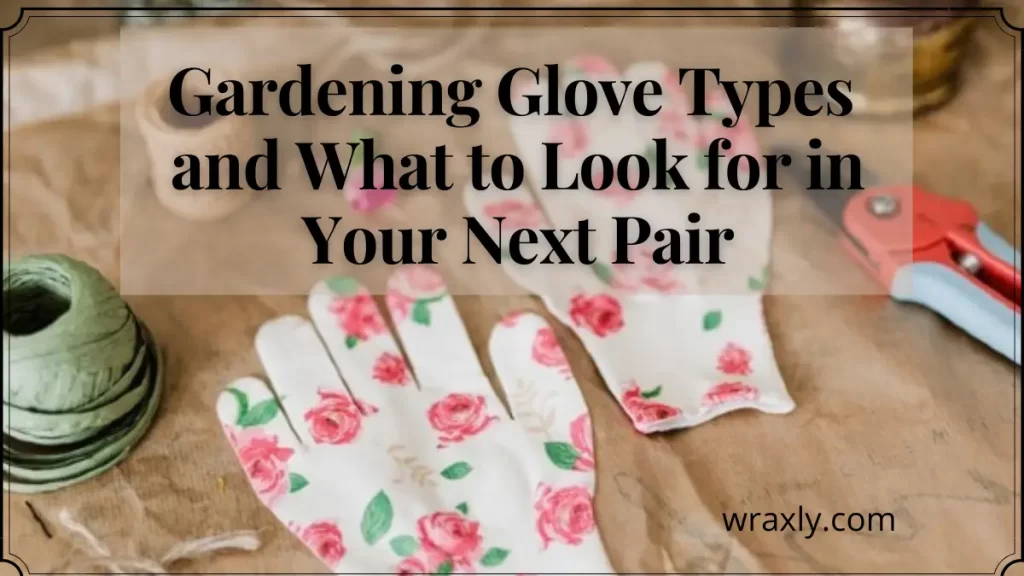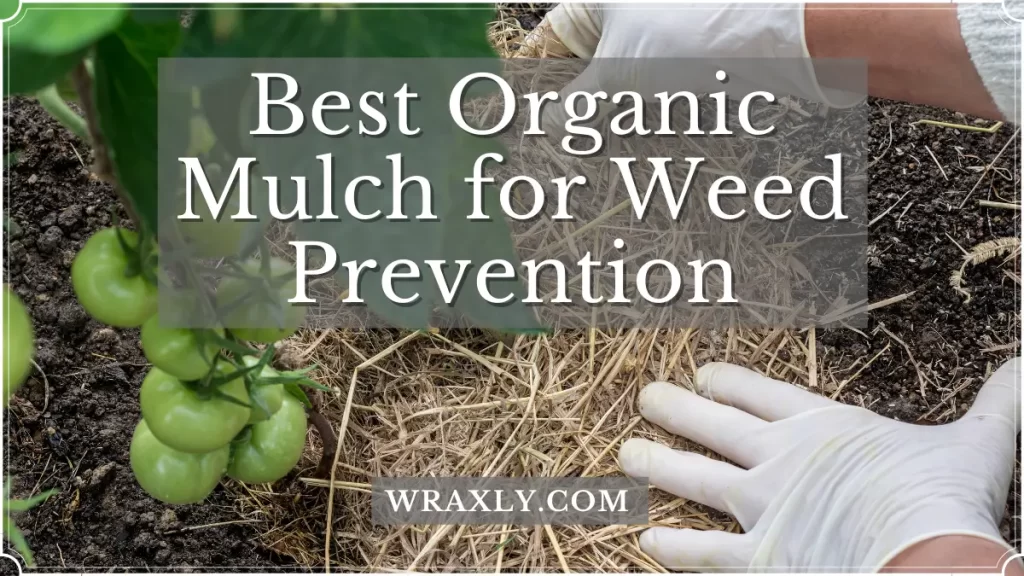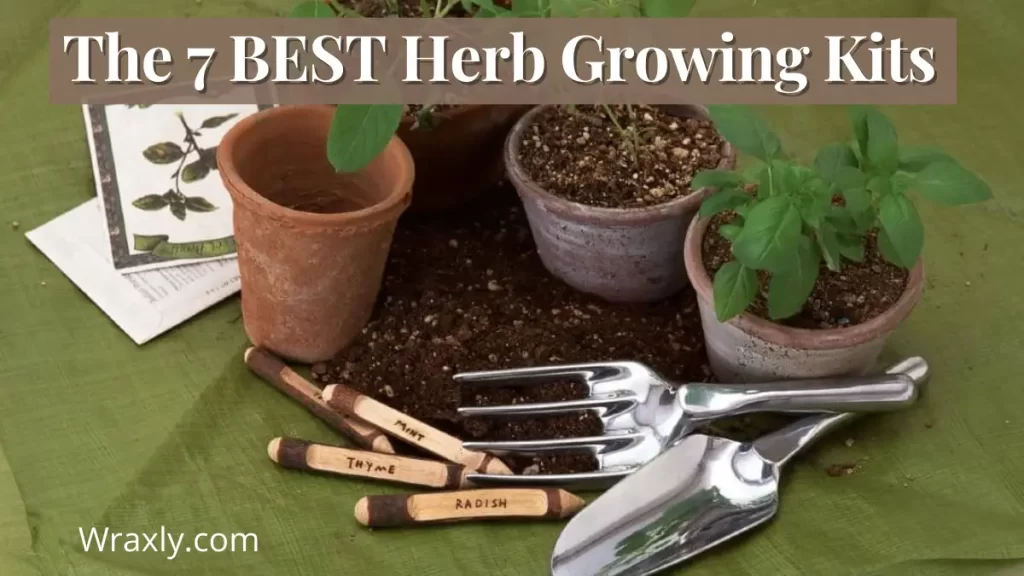Most people are familiar with gardening gloves and the role they play while you work outside. But are you sure that you know all the primary types of gardening gloves out there? If not, this post will introduce you to the main garden glove varieties and discuss some of the main features to consider when you need to buy a pair.

In a Hurry? Here are our Top Picks…
The Most Popular Types of Gardening Gloves
The easiest and most useful way to divide gardening gloves is by their materials. The most common of those materials are these five:
- Leather Gardening Gloves
- Latex Gardening Gloves
- Suede Gardening Gloves
- Fabric or Cloth Gardening Gloves
- Synthetic Gardening Gloves
As you’ll soon see, these materials not only define different gardening glove categories. They also have different capabilities that make them better suited to different gardening chores.
Leather Gardening Gloves
Leather gloves are some of the most durable gardening gloves that you can find. This material is strong enough to prevent thorns and stingers from reaching your skin. It also proves to be very long-lasting and capable of forming your unique grip over time. Leather gardening gloves can be somewhat stiff, but if you clean them well, they should remain comfortable to wear.
Top Product: Vgo 1-Pair Natural Genuine Goatskin Leather Gardening Gloves
Latex Gardening Gloves
Latex is currently one of the most popular materials that you’ll find in gardening gloves. These gloves often include nylon or some other soft fabric to ensure flexibility. Then, a coating of latex on the palms and fingers gives you the protection you need. Overall, these gloves do an excellent job of balancing mobility with durability.
Top Product: COOLJOB Gardening Breathable Rubber Coated Garden Gloves
Suede Gardening Gloves
Comfort is the main selling point of suede gardening gloves. The suede material is more pliable than many other glove material options. These gloves also feature soft inner linings that ensure your hands contact a soft surface while you work. At times, these gloves can become rigid if you let dirt or mud dry on them. Fortunately, they are easy to clean and should hold up well with the right care.
Top Product: Digz Women’s Full Suede Leather Garden Gloves
Fabric or Cloth Gardening Gloves
Cloth gardening gloves are another fantastic choice if you value comfort and maneuverability. The downside to these fabric-based gloves is the lack of protection they provide. Compared to other options, a fabric glove is more likely to allow a sharp object to penetrate. However, this option remains highly affordable, partly due to the fact that these gloves are made of readily available materials like cotton and nylon.
Top Product: Skytree Breathable Nylon Gardening Gloves
Synthetic Gardening Gloves
The options above are a bit more traditional. But there are synthetic materials that go into some gardening gloves. At times, these materials may combine with another material like leather to achieve a specific fit or feel for the glove. Other products may consist entirely of rubber and other man-made materials. One benefit of such gloves is that they tend to have great longevity.
Top Product: Wells Lamont Spandex Synthetic Leather Palm Gardening Work Gloves
Features to Evaluate When Buying Gardening Gloves
Gardening gloves are straightforward in that all types serve the same general role in garden work. However, you might be surprised to find that there are several features you should consider beyond materials next time you want to buy a pair of gloves. Below are a few of those crucial considerations you should make when shopping for gardening gloves.
Sizing and Specific Fit
The way a glove fits your hand influences how comfortable it will be to wear while you work. As such, you should not overlook sizing while you select your next pair of gardening gloves.
Thankfully, finding a pair of gloves that fit well is not too difficult. Despite that, the topic is worth your time and attention.
Some gardening gloves will be a one-size-fits-all gloves. Others come in standard sizes like small, medium, and large. Still, others will list specific measurements for dimensions such as overall length and the wrist cuff size.
Take your time in choosing a glove that is sized properly for your hand. As always, the best way to make sure of that is to
Wrist Cuff Style
The style of wrist cuff your glove factors into how much dirt and debris will find its way inside your glove. Generally, there are a few different wrist cuff styles that you’ll come across while you browse:
- Loose wrist cuffs
- Velcro wrist cuffs
- Elastic wrist cuffs.
Loose wrist cuffs don’t always cling tightly to your wrist. That means there will be openings through which dirt can enter. On the other hand, Velcro and elastic wrist cuffs form a tighter seal keeping unwanted materials on the outside of your glove where they belong.
Water Resistance
Working outside often involves getting wet. Any time you need to use water while you work in the garden, you should think about using a pair of gloves that are water-resistant. Using a non-water-resistant gardening glove while contacting water will not only get your hands wet but also decrease the lifespan of your gloves.
Hand Orientation
Pay attention to hand orientation while buying gloves, especially when you are buying a set of gloves. While some gloves will fit on both your right and your left hand, other gloves are designed for one or the other.
Allergens
Some glove materials may cause an allergic reaction for some gardeners. This is most common for gloves that have a latex coating. Those with a latex allergy should opt for another glove material such as cloth or real leather.
Additional Protections
Along with waterproofing, some gloves will come with other additional forms of protection. For example, some gloves are ideal for dealing with harmful chemicals, while others specialize in preventing cuts. Know about these additional protections and think about which ones might apply to the jobs you do most.
FOR FURTHER READING
- 8 Best Garden Tool Sets to Buy
- Best Retractable Garden Hoses
- 5 Inexpensive but Essential Gardening Tools
- Must-Have Accessories to Keep You Comfortable in the Garden
- Best Garden Stools
Why Gardening Gloves Are Worth Buying
While some people wear them for every kind of work they do outside, others are more skeptical regarding the value of gardening gloves. If you fall into that second group, you should know about the noteworthy advantages of gardening gloves and why using them is in your best interest.
Fewer Cuts and Abrasions
It’s surprisingly easy to cut your skin while working in the garden. Thorns, sharp sticks, and stones are just a few of the items that could pierce your skin while you work. There are also some gardening chores that involve repetitive motions and can cause rough abrasions on your skin.
Gardening gloves make it far less likely that such cuts will occur. By acting as an extra layer of protection, gloves make it that much harder for a sharp point to reach and break your skin.
Protection from Chemicals
Although they are very convenient for getting rid of pests and weeds, pesticides and herbicides contain chemicals that can be harmful to human health. While it is unlikely that a commercially sold product will cause a significant reaction, limiting your exposure to these chemicals remains the best course of action.
A reliable pair of gardening gloves is what you need to prevent that exposure. That way, you can control the unwanted animals and plants in your yard without coating your skin with chemicals.
Keeps Your Hands Soft and Clean
Not everyone wants to develop calluses on their hands and finger. However, that outcome is quite likely if you work in the garden without gloves. Repetitive actions like digging or chopping wood will often cause calluses on skin that are not acclimated to the activity.
Likewise, dirt and other grime can get stuck on your hands and under your fingernails while you do your gardening maintenance. To minimize that filth and keep your hands as soft as can be, gardening gloves are what you need.
Avoid Infections
Many people don’t recognize that gardening is an opportunity to contract harmful infections. In fact, there are several infectious diseases you can catch while working with your plants, including:
- Tetanus
- Sepsis
- Rose gardener’s disease
None of those ailments or the other infections that can arise from gardening are issues you want to deal with. In many cases, wearing a simple set of gardening gloves will make such infections unlikely.
Knowing When to Use Gardening Gloves
You can wear gardening gloves any time you like. It is rare that you’ll find a scenario in which having them on will be specifically disadvantageous. However, there are also a few instances during which you should always wear gardening gloves for protection. Here are a few of the most prominent tasks for which gloves will serve you well:
- Spraying chemicals like pesticides and herbicides
- Handling rough textures and objects like stones or gravel
- Pruning large branches or any plant with thorns
Conclusion
Gardening gloves are an effective form of protection for nearly all of your standard gardening activities. These gloves also come in several varieties. Understanding each one and knowing the main features to look for is what will get you the most out of the next gardening gloves you buy.
Sources:
Glyphosate (Roundup): Understanding Risks to Human Health

John Haryasz is a freelance writer and landscape designer. In the field of landscape architecture, he has contributed to many successful design projects throughout the country. As a writer, John specializes in creating captivating and informative web content. Through that work, he aims to share his design knowledge and promote engagement with the outdoor world.



